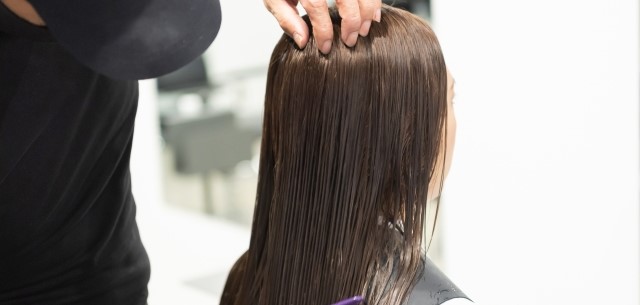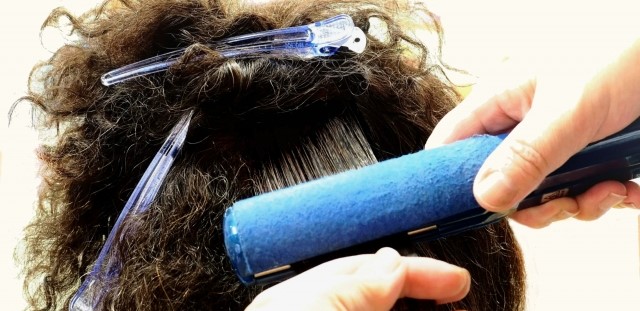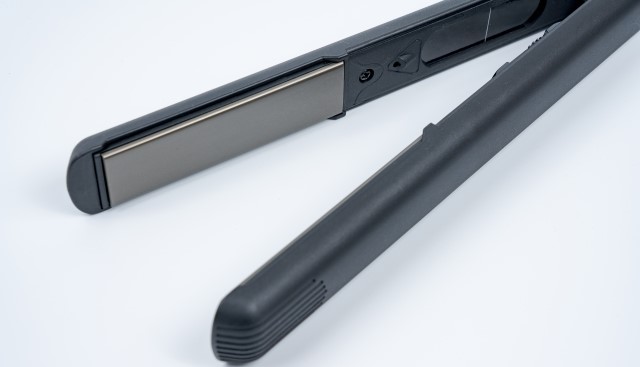くせ毛が気になる場合、縮毛矯正やストパーでストレートヘアにしたい人も多いと思います。
しかし、縮毛矯正とストパーの違いが分からなくてどちらをすればいいのか迷ったことはありませんか?
2つの施術は違う施術のため、メリットやデメリットが変わってきます。
今回は縮毛矯正とストパーの違いやメリット・デメリット、選び方などを詳しく解説します。
【知恵袋でも質問多数】縮毛矯正とストパーの違いってなに?
縮毛矯正とストパーの違いやメリット・デメリットについて説明します。
縮毛矯正とストパーの違いとは

縮毛矯正とストパーの大きな違いは、ヘアアイロンで熱処理をするかです。
縮毛矯正の場合、1剤で柔らかくした髪にヘアアイロンをかけてくせ毛を伸ばし、2剤でまっすぐになった髪を固定します。
ストパーの場合は、ヘアアイロンを使用する工程がありません。
これは、縮毛矯正がくせ毛を伸ばす施術なのに対して、本来ストパーはパーマをかけた髪のくせを取る施術だからです。
現在は髪のボリュームをおさえるためにもストパーは使われますが、本来の目的は違います。
縮毛矯正はくせ毛を伸ばすための施術、ストパーは髪のボリュームをおさえたりパーマをかけた髪を元に戻す施術になります。
縮毛矯正のメリット・デメリットは?

縮毛矯正のメリットは次の通りです。
- 強いくせでもまっすぐにできる
- 半永久的に効果が持続する
デメリットは次の通りです。
- 髪へのダメージが大きい
- 美容室のメニューの中でも値段が高め
以上が大きなメリットとデメリットになります。
縮毛矯正は薬剤と熱を利用してしっかり髪のクセを伸ばしてくれるのですが、髪へのダメージがストパーと比べて大きい施術です。
また、美容室の中でも値段設定が高めなのでコスト面を考えるとこれもデメリットになります。
ストパーのメリット・デメリットは?

ストパーのメリットは次の通りです。
- 縮毛矯正よりも髪へのダメージが少ない
- 自然なストレートヘアになりやすい
- 価格が縮毛矯正よりも安い
デメリットは次の通りです。
- くせを取る力が半永久的ではない
- くせを伸ばす力が縮毛矯正よりも弱い
縮毛矯正と比べてストパーは髪へのダメージが少なく、価格が安いのがメリットです。
また、ヘアアイロンを使用しないため自然なストレートヘアにしやすいのもメリットになります。
対してデメリットとしては、日が経つにつれてくせが出てきたりクセを伸ばす力が縮毛矯正よりも弱い点があげられます。
縮毛矯正とストパーの違いで選び方は変わる?
縮毛矯正とストパーどちらをかけるのか、選び方について説明します。
縮毛矯正がおすすめなケースとは

縮毛矯正の特徴は半永久的に髪のくせを伸ばせることと、髪への強いダメージです。
ストパーよりもクセを伸ばす力が強い縮毛矯正は頑固なくせ毛におすすめです。
また、ピンとまっすぐなストレートヘアにしたい場合も縮毛矯正の方が向いています。
ストパーがおすすめなケースとは

ストパーの特徴は自然なストレートヘアにできることと、髪へのダメージが縮毛矯正よりも少ないことです。
そのため、あまり髪のクセが強くなくて自然なストレートヘアにしたい場合はストパーがおすすめです。
また、ストパーの本来の目的でもあるパーマをかけた髪を元に戻したい時もストパーの方が向いています。
メンズは縮毛矯正とストパーどっちがいいの?デザインに違いはある?
メンズの場合は縮毛矯正とストパーどちらがいいのか、デザイン面も含めて説明します。
メンズの縮毛矯正は不安?

男性の場合は髪が短いことが多いため、縮毛矯正をかけると不自然になるのではないかと不安に思う人が多いです。
しかし、縮毛矯正でもきちんとした技術を持っている美容室なら自然なストレートヘアにしてくれます。
男性の場合も上記で説明したメリット・デメリットを参考に、縮毛矯正かストパーを選んでみましょう。
縮毛矯正だと難しい髪型もある?

縮毛矯正はある程度長さがないと、アイロンで挟めず熱処理できません。
そのため、短すぎるショートは縮毛矯正をかけるのが難しいです。
最低でも3㎝くらいの長さはあった方が良いと考えてください。
また、髪に段を作るウルフカットは縮毛矯正をかけたまっすぐな髪だと難しいです。
クセの強さによって縮毛矯正かストパーか選ぶ方法も

髪質やクセの強さは男性も女性も様々です。
どちらの施術が良いか迷った時は、クセの強い髪は縮毛矯正、クセのあまりない髪はストパーと選ぶ方法が一番単純な選び方になります。
縮毛矯正もストパーもどちらもくせ毛の悩みを解決してくれる人気の施術です。
しかし、どちら施術にもメリットとデメリットがあります。
それだけでなく、どちらも髪へのダメージは避けられません。
髪の状態やクセの強さなど多角的に考えて自分にあった施術を選びましょう。



コメント